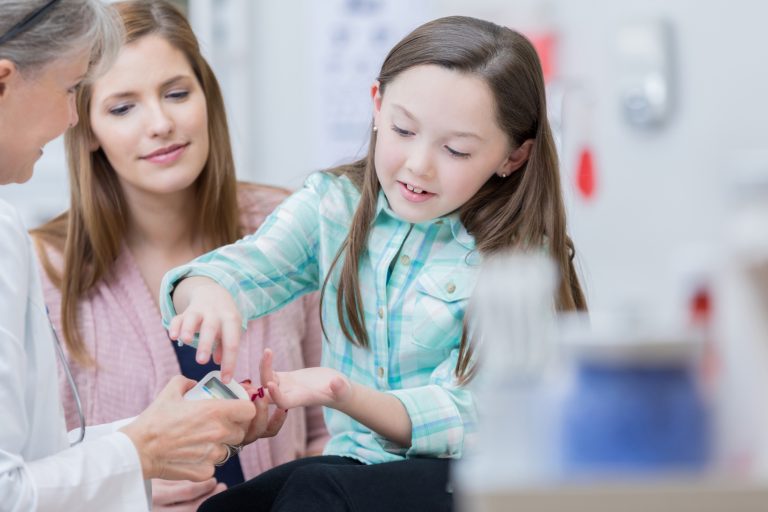
Type 1 diabetes (T1D) is an autoimmune disorder that often begins early in life. It is upon the appearance of islet autoantibodies, targeting the pancreatic islets that ultimately result in insulin deficiency, that a person is considered high risk. But clinical diabetes can result in weeks to years later and autoantibody surveillance programs have limited public health adoption.
A team of researchers sought a new approach for predicting which babies will develop T1D, moving the science a step closer to routine testing for newborns which could avoid life-threatening complications.
The authors of a new paper wrote that they sought an “accurate, cost-effective estimation of future T1D risk by developing a combined risk score incorporating both fixed and variable factors (genetic, clinical and immunological).”
The researchers included scientists at seven international sites that followed 7,798 children at high risk of developing type 1 diabetes from birth, over nine years. The cohort comes from The Environmental Determinants of Diabetes in the Young (TEDDY) study. The TEDDY study is a large international study funded primarily by the U.S. National Institutes of Health and U.S. Centers for Disease Control, as well as by the charity JDRF.
The work is published in a paper titled, “A Combined Risk Score Enhances Prediction of Type 1 Diabetes Among Susceptible Children,” published in Nature Medicine.
The team developed a combined risk score (CRS) approach that incorporates genetics, clinical factors such as family history of diabetes, and their count of islet autoantibodies—biomarkers known to be implicated in type 1 diabetes.
The research team found that the new combined approach dramatically improved prediction of which children would develop type 1 diabetes, potentially allowing better diabetes risk counseling of families.
Compared with autoantibodies alone, the authors noted, the combined model “dramatically improves T1D prediction at ≥2 years of age over horizons up to 8 years of age (area under the receiver operating characteristic curve ≥ 0.9), doubles the estimated efficiency of population-based newborn screening to prevent ketoacidosis, and enables individualized risk estimates for better prevention trial selection.”
Most importantly, the new approach doubled the efficiency of programs to screen newborns to prevent the potentially deadly condition of ketoacidosis, a consequence of type 1 diabetes in which insulin deficiency causes the blood to become too acidic. Identifying which children are at the highest risk will also benefit clinical trials on drugs that are showing promise in preventing the condition.
Lauric Ferrat, PhD, a postdoctoral research fellow at the University of Exeter Medical School, said, “At the moment, 40% of children who are diagnosed with type 1 diabetes have the severe complication of ketoacidosis. For the very young this is life-threatening, resulting in long intensive hospitalizations and in some cases even paralysis or death. Using our new combined approach to identify which babies will develop diabetes can prevent these tragedies, and ensure children are on the right treatment pathway earlier in life, meaning better health.”
William Hagopian, MD, PhD, clinical associate professor at the Pacific Northwest Research Institute, said: “We’re really excited by these findings. They suggest that the routine heel prick testing of babies done at birth could go a long way towards preventing early sickness as well as predicting which children will get type 1 diabetes years later. We’re now putting this to the test in a trial in Washington State. We hope it will ultimately be used internationally to identify the condition as early as possible, and to power efforts to prevent the disease.”
The authors wrote that “substituting a polygenic GRS for more commonly used HLA genotypes, and then combining this information with other variables into a CRS for adaptive surveillance, greatly improves the efficiency and therefore may allow reconsideration of public health-based newborn screening for T1D and related autoimmune diseases.” Researchers believe the combined approach can also be rolled out to predict the onset of other diseases with a strong genetic component that are identifiable in childhood, such as celiac disease.













